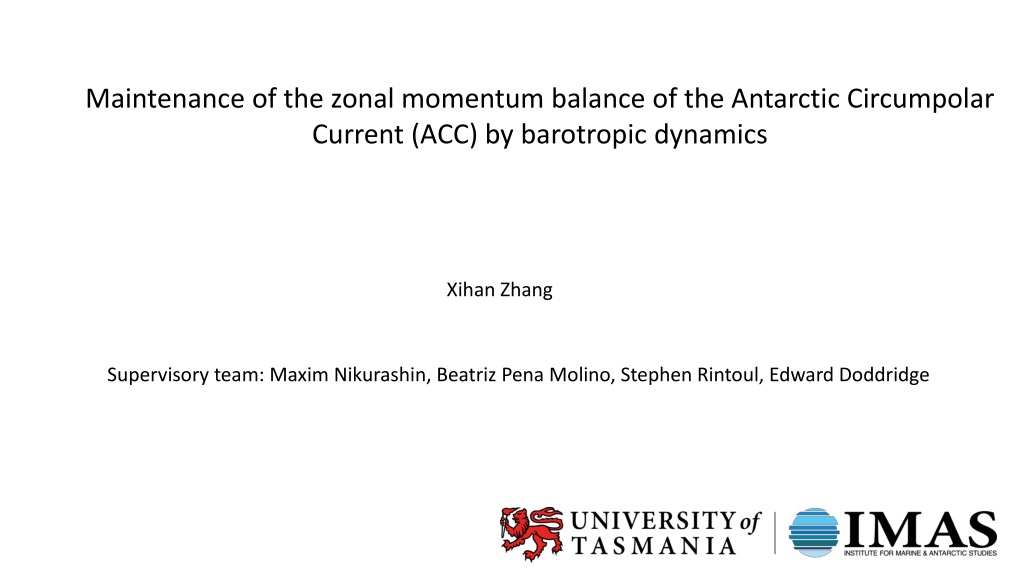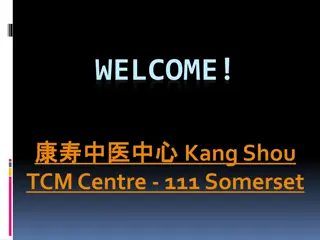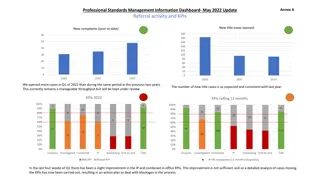Understanding Zonal Momentum Balance in the Antarctic Circumpolar Current
This study investigates the zonal momentum balance of the Antarctic Circumpolar Current (ACC) by analyzing the interplay between wind stress, topographic form stress, and eddy dynamics. The research explores the maintenance and adjustment of momentum balance in the ACC, emphasizing the roles of barotropic and baroclinic dynamics. Using an idealized channel model, the study sheds light on the complex mechanisms that regulate the zonal momentum transfer in this crucial oceanic current.
Download Presentation

Please find below an Image/Link to download the presentation.
The content on the website is provided AS IS for your information and personal use only. It may not be sold, licensed, or shared on other websites without obtaining consent from the author. Download presentation by click this link. If you encounter any issues during the download, it is possible that the publisher has removed the file from their server.
E N D
Presentation Transcript
Maintenance of the zonal momentum balance of the Antarctic Circumpolar Current (ACC) by barotropic dynamics Xihan Zhang Supervisory team: Maxim Nikurashin, Beatriz Pena Molino, Stephen Rintoul, Edward Doddridge
Background: momentum balance between wind stress and TFS Depth-integrated momentum balance of the Antarctic Circumpolar Current (ACC) is between wind stress and topographic form stress (TFS) (e.g., Munk & Palm 1950) Topographic form stress arises from pressure difference across topography TFS This depth-integrated balance suggests that momentum is transmitted from the surface to the bottom throughout the water column (e.g., Johnson and Bryden, 1989) Stewart and Hogg 2017
Background: Eddies transfer momentum downwards (TEM framework) Bringing eddy buoyancy fluxes into the zonal momentum equation, TEM framework connects the meridional overturning circulation (MOC) (i.e., isopycnal flattening) to the ACC zonal momentum via Eliassen-Palm (EP) fluxes, i.e., eddy momentum stresses. Eddies flux buoyancy meridionally (? ? ), flattening isopycnals, thereby redistributing the zonal velocity shear vertically This effect is brought into zonal momentum equation represented by eddy momentum fluxes Meridional isopycnal structure ? ??(? ? ? = eddy momentum stress ) Marshall and Radko 2003 ?? ??(?? ? ? ? ? =? ? ?? ?? ) wind stress matches to eddy momentum stress in the limit of zero residual circulation ?? ?? ?????
Background: Barotropic vs baroclinic dynamics for the ACC momentum balance TEM and isopycnal frameworks naturally put emphasis on baroclinic structure/eddy fluxes for the maintenance of the ACC momentum balance Eddy momentum stress Howard et al (2015) shows that TFS is quickly established through barotropic dynamics during the initial transient phase, but then they argue that eddies are responsible for the momentum transfer at equilibrium In this study, we explore the maintenance and adjustment of the ACC momentum balance from a Eulerian, depth- coordinate perspective TFS We show that the ACC momentum balance is not only initially established, but also maintained at equilibrium and responds to changes in wind by barotropic dynamics Year Howard et al (2015)
Method: an idealized channel model with a ridge MITgcm Zonally re-entrant channel, depth-coordinate model A Gaussian ridge in the middle of the domain 10-km horizontal resolution Stratified (barotropic/baroclinic) & homogenous (only barotropic) simulations A snapshot of surface temperature Model bathymetry and mean SSH
Mechanism: Spin up from rest Surface Ekman layer piles water in the north, which drives a zonal flow through barotropic dynamics (SSH slope) Zonal flow interacts with a ridge and sets TFS. Return flow, balanced by TFS, closes the total volume budget (i.e., equilibrates SSH) Upwelling and downwelling formed from continuity steepen isopycnals in a stratified flow Steepening isopycnals generate baroclinic pressure gradient that opposes barotropic pressure gradient due to SSH slope Thus, SSH keeps tilting to maintain the TFS and compensate for the isopycnal steepening H H L L z H L SSH stops tilting when baroclinic eddies appear and act to flatten the isopycnals (i.e., baroclinic structure reaches equilibrium and mass budget is closed) y Momentum balances (wind stress = Coriolis at the surface and Coriolis = TFS at the bottom) are closed without momentum stresses (i.e.., transfer) in the interior Red: barotropic dynamics Blue: baroclinic dynamics
Mechanism: Response to changes in wind When wind stress increases, baroclinic structure is saturated, and it is the barotropic dynamics that respond and adjust the system to a new equilibrium: Increased wind stress drives a stronger northward flow in the surface Ekman layer SSH slopes more significantly and generates a stronger barotropic pressure gradient The stronger barotropic pressure increases the bottom flow, resulting in stronger TFS (and return flow) that balances the increased wind (Ekman transport) z L H H L H L y Red: barotropic dynamics Blue: baroclinic dynamics
Baroclinic dynamics is saturated Results: Response to wind saturated baroclinicity Isopycnal slopes & Baroclinic transport have no adjustment to wind It is the barotropic transport that changes and account for the increase in the total transport Wind doubled
Results: Response to wind adjustment by barotropic dynamics Wind doubled Depth-integrated momentum balance is readjusted to a new balance within the first month after doubling of the wind Adjustment of the return flow to Ekman Return flow at the bottom shows the same adjustment as during the spin-up stage, which is related to the establishment of TFS Stratified simulation and homogenous simulation undergo a similar adjustment in response to changes in wind, suggesting that baroclinic eddies are not essential for the wind-TFS balance Adjustment of TFS to wind stress
Summary We explore the maintenance of the ACC zonal momentum balance from a Eulerian, depth- coordinate perspective. While it is mathematically equivalent to TEM (or, isopycnal framework), it offers a different and useful insight in the governing dynamics In this framework, eddy fluxes are part of the buoyancy budget and momentum balances at the surface and bottom are connected by flow continuity and regulated by pressure fields without momentum stresses in the interior. It is the barotropic dynamics that maintains the depth-integrated momentum balance between wind stress and TFS, compensating also for the opposing effect of baroclinicity The critical role of the barotropic dynamics in this balance explains the short time-scale of the ACC (TFS, total transport, eddy fluxes) adjustment to wind























